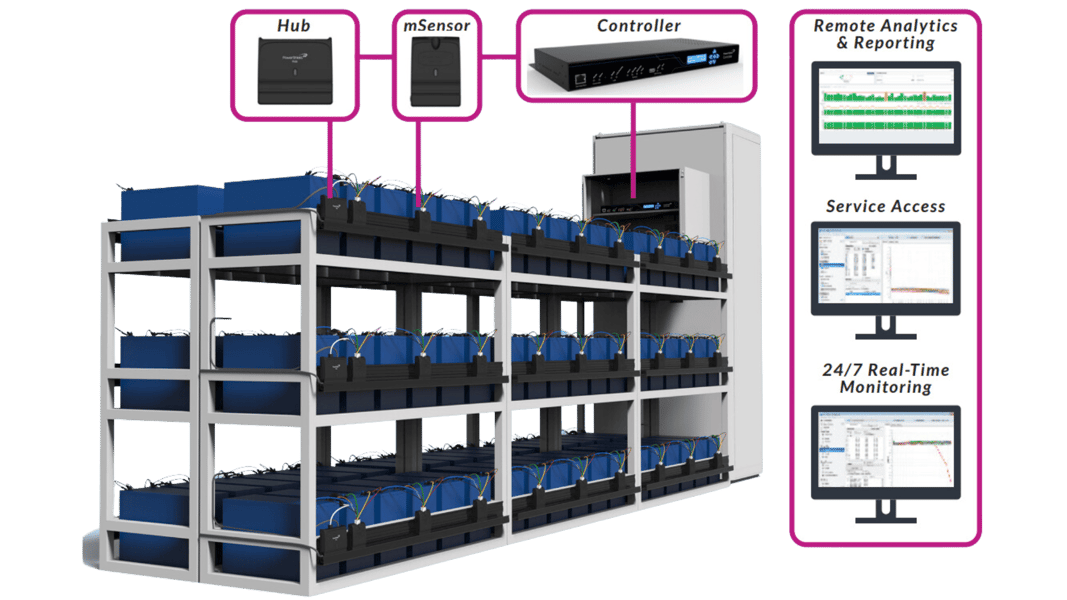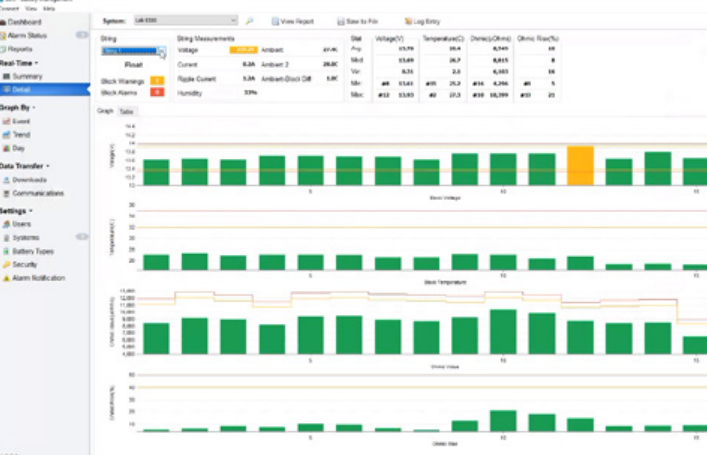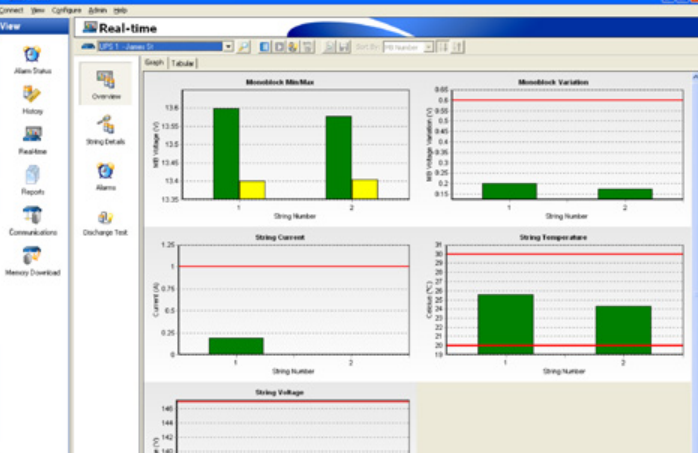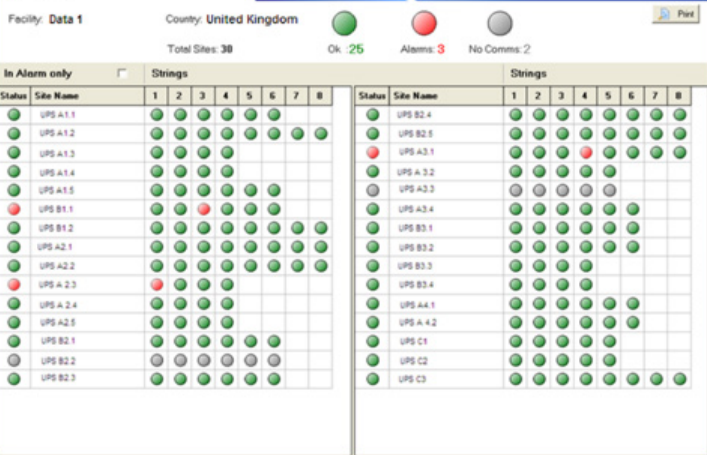-1.png?width=1033&height=246&name=Untitled%20design%20(5)-1.png)
PowerShield8 Critical Battery Performance
Home > Solutions
PowerShield: Setting the standard in battery monitoring
PowerShield8 is a versatile Advanced Battery Monitoring and Management System that can monitor all your critical battery assets, whether they are Lead Acid, Ni-Cad, or Lithium. Designed to easily integrate with all common UPS, BMS, and DCIM systems, PowerShield8 can scale to monitor a virtually unlimited number of batteries across multiple locations. Help your team to comply with your battery warranty requirements, achieve the highest battery management standards, and ensure that the health, state of readiness, and lifespan of your batteries are optimized.
PowerShield8’s high-quality, continuous real-time battery data sampling, and ease of use set the standard for standby battery monitoring and management, delivering peace of mind that your stationary batteries will be healthy and ready to perform whenever they are needed.
Data first by design
Quality data in, quality results out. What sets PowerShield apart is its data-first system design. Every hardware and software component is designed to ensure comprehensive, high-frequency, accurate, and repeatable data collection, management, and presentation.
PowerShield8 makes your battery data accessible at a battery system and enterprise level. By using open data architecture standards to ensure that your valuable battery room data can be easily shared with other critical IT systems, such as a Building Management System (BMS) or Data Center Infrastructure Management (DCIM) System, you can ensure your valuable data can be delivered to where your team needs it most.
A complete PowerShield8 Advanced Battery Monitoring and Management installation of hardware and software components ensures that all your battery assets are continuously monitored in a consistent and comparable manner.

Modular, scalable and flexible by design
Designed and manufactured to make any standby battery installation smarter and safer.
PowerShield8 can be configured to consistently monitor an almost unlimited number of blocks (VRLA, VLA and Ni-Cad) or cells (Li-ion), whether in racks or cabinets, in a high-quality, consistent manner, regardless of their charging regime or location. PowerShield8 suitable for UPS, Telco, Power Utility, Emergency Lighting, Genset and other critical power applications. Whether it is the data collection layer, data management and control layer, or the presentation and user interface layer, PowerShield8 components can be mixed, matched, and configured to meet the most demanding critical power battery monitoring and management requirements.

A typical PowerShield8 battery management system setup
It starts with quality data sampling. The data collection layer consists of smart mSensors on each block and Hubs on each string of Lead-Acid or NiCad batteries. Controllers manage the data sampling from the mSensors and Hubs, analysing and storing the data ready to be transferred. The presentation and user interface layers include Controller UI, PowerShield Assure and Link software and/or other third party systems such as BMS or DCIM systems.
Want more details on how it works >>
Advanced features
- Continuous, fast data sampling in all string states (float, charge, discharge and idle)
- Advanced data logging (7 log types) makes fault finding and trend analysis easier
- High resolution, accurate and repeatable measurements
- Lifetime data capture by Controller (Battery System) and Assure/Link Software (Enterprise)
- Thermal Runaway, warnings, alarms and Protection (TRP)
- Open data architecture for ease of integration with BMS and DCIM systems
- 24/7 user-defined alarms and alerts
- Tidier, safer battery room wiring
- Consistently monitor and manage any number of battery assets across multiple locations
PowerShield8 Lithium
Improve your Lithium battery monitoring and management with PowerShield8.
If your team has recently switched to Lithium batteries, they may be noticing a few battery monitoring and management gaps.
Find out how PowerShield8 can help them achieve battery management excellence.
PowerShield8 Assure and Link Software
Powerful Battery Monitoring and Management Software for battery management excellence.



mSensor Solution
For small and remote stationary battery installations.
Integrating our smart mSensors with an existing third party system is an option for some smaller less sophisticated use cases.